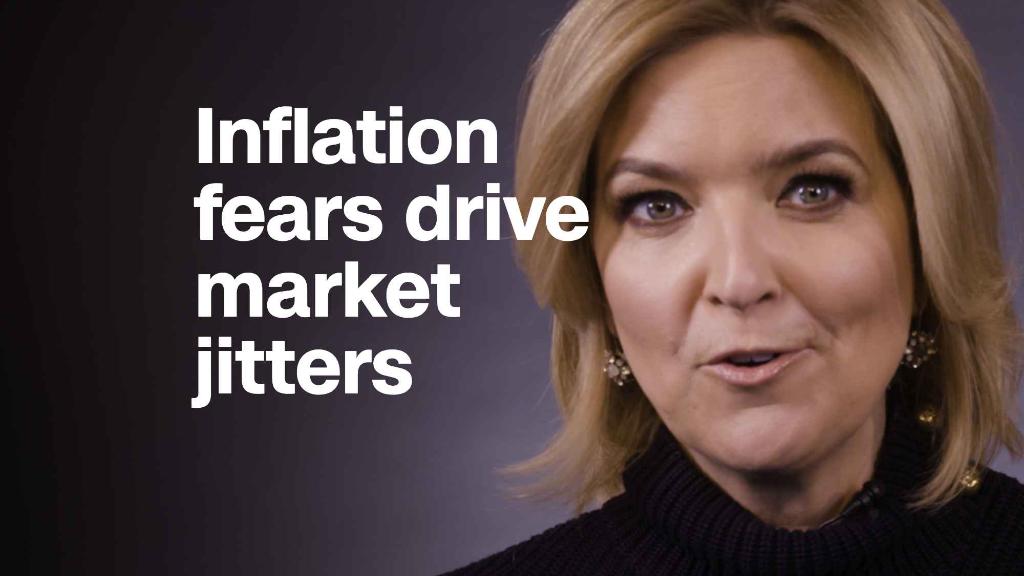
During scary times, cash usually flees into the arms of Uncle Sam.
Yet during the stock market mayhem of the past two weeks, not even safe U.S. Treasury bonds were spared.
The Dow plunged 2,400 points, or 9%, between January 26 and February 9 as investors fretted about the threat of inflation. But in a twist, investors sold bonds, too.
The yield on the 10-year U.S. Treasury note, which moves opposite the price spiked from 2.62% to 2.85%. Then it inched higher again on Monday because investors kept selling bonds, even while they drove the Dow up 400 points.
"While stocks are getting a respite ... there is no bounce to bonds at all," Peter Boockvar, chief investment officer at Bleakley Advisory Group, wrote in a report on Monday.
Strange as it may sound, one reason for the double sell-off is that the economy is so strong. Investors are selling Treasuries because economic growth has taken off and because think they inflation and higher interest rates are coming. And a splurge in spending by Washington will force the U.S. to sell even more Treasuries in the years to come.
That bonds didn't rally last week, while stocks were selling off, "does not inspire confidence" that yields will come down soon, Morgan Stanley strategist Matthew Hornbach wrote in a report on Monday.
Related: Confused by the market turmoil? 13 questions answered
The spike in bond yields has unnerved investors who grew accustomed to extremely low rates that made stocks look like a bargain by comparison.
U.S. Treasury rates play a critical role in modern finance. They serve as the benchmark for all other assets, helping set the price on everything from mortgages to stocks. That's because U.S. government debt is considered the safest investment around.
It's true that during the worst of the selling last week, cash briefly went to the safety of U.S. government debt.
For instance, when the Dow plummeted almost 1,600 points during trading on February 5, strong buying drove the 10-year Treasury yield sharply lower. But the buying was fleeting, and yields quickly crept back up, causing more problems on Wall Street.
Even though last week was the worst for the Dow and S&P 500 in two years, 10-year Treasury yields were almost unchanged.
Under normal circumstances, yields would be down dramatically -- by about 0.5 percentage points, according to Bank of America Merrill Lynch.
"We're experiencing a regime change," said Terry Sandven, chief equity strategist at U.S. Bank Wealth Management.
Hornbach suggested stocks may need to plunge even further before yields start falling like they normally would.
"At a minimum, risky assets have to perform even more poorly than the past week in order to goad yields lower," he wrote.
Related: Why the bond market is freaking out Wall Street
Many analysts anticipate yields will continue to creep higher, potentially adding to the rocky trading on Wall Street.
Higher rates reflect the stronger economy and signs of inflation. Wages grew in January at the fastest pace since 2009. Some analysts think the Federal Reserve will be forced to accelerate its plans to raise short-term rates, adding to the pressure on bonds.
A spending spree in Washington, after years of belt-tightening, is also playing a role. Republican tax cuts and a bipartisan spending agreement are expected to push the federal deficit to around $1 trillion by fiscal 2019.
The government has to borrow money to have for that deficit spending, which means it will need to sell more bonds — probably at higher rates.
Washington's "ambitious spending plan" is a "sea change from years of fiscal consolidation," Richard Turnill, BlackRock's global chief investment strategist, wrote in a note on Monday.
The stock market probably wouldn't respond well to a sudden spike in Treasury yields. Higher rates make stocks look less attractive by comparison.
"If you start to close in on 3%, you'll get another wave of selling," said Ian Winer, head of equities at Wedbush Securities.
But few anticipate Treasury yields surging much beyond 3% in the near term. That's because more attractive rates will eventually lure cash from individual investors, sovereign wealth funds and insurance companies.
"There will be demand for 10-year Treasuries at higher yields. That will put an inhibitor on how high yields can go," said Mike Gitlin, head of fixed income at Capital Group.


